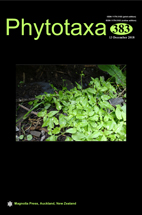Abstract
This study aimed to verify the taxonomic relationships within the genus Secale. The plant material included 16 wild rye accessions from four species. Two approaches were applied: 1) whole genome scanning using three molecular marker systems: diversity arrays technology sequencing, simple sequence repeats and sequence-specific amplification polymorphism; and 2) characterisation based on polymorphisms within the sequences of two genes involved in benzoxazinoid biosynthesis: ScBx1 and ScBx5. Bayesian and neighbour-joining clustering and principal coordinate analysis were applied to illustrate relationships among species and accessions of Secale based on genetic distance (GD) matrices. Pearson’s correlation analysis between GD matrices was conducted. Clustering of Secale accessions revealed that S. sylvestre samples were the most divergent. The remaining accessions formed two clusters. One of them comprised S. strictum accessions while the second cluster consisted of subspecies of S. cereale, the species S. vavilovii and S. strictum subsp. ciliatoglume.

